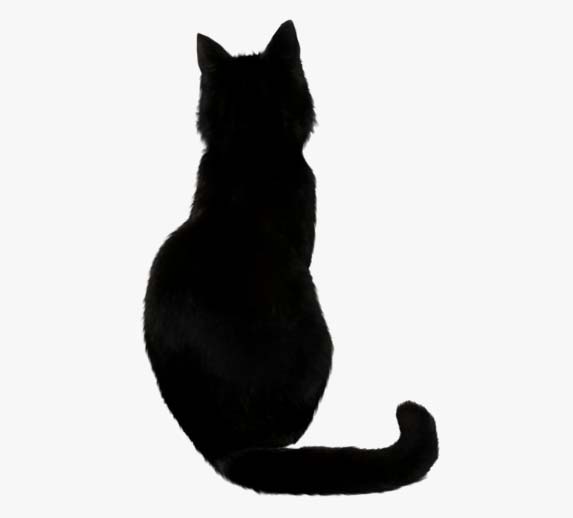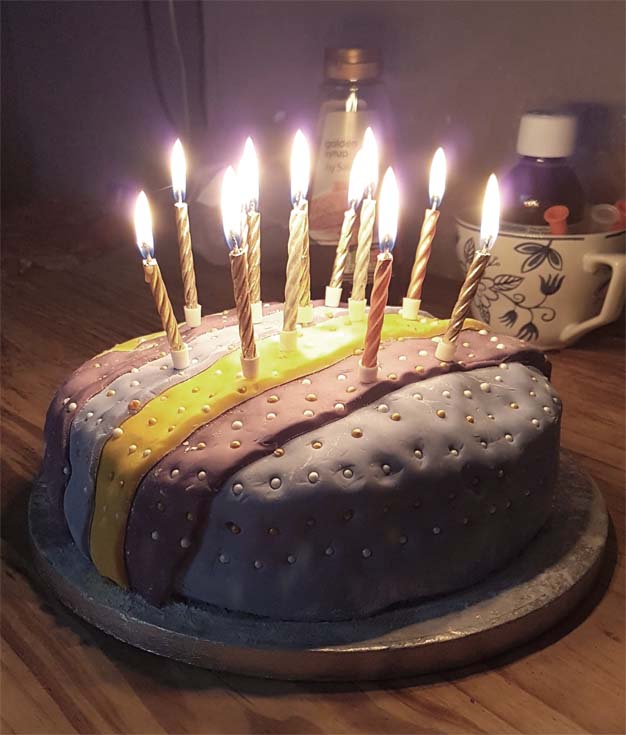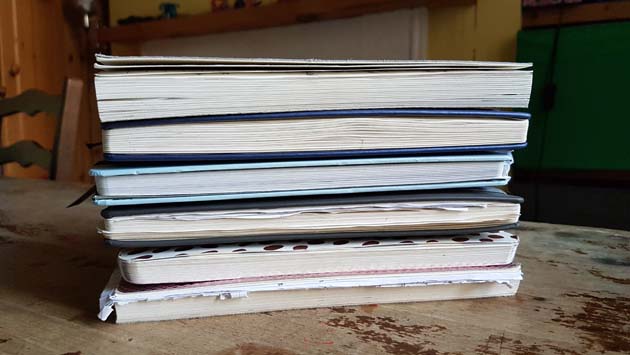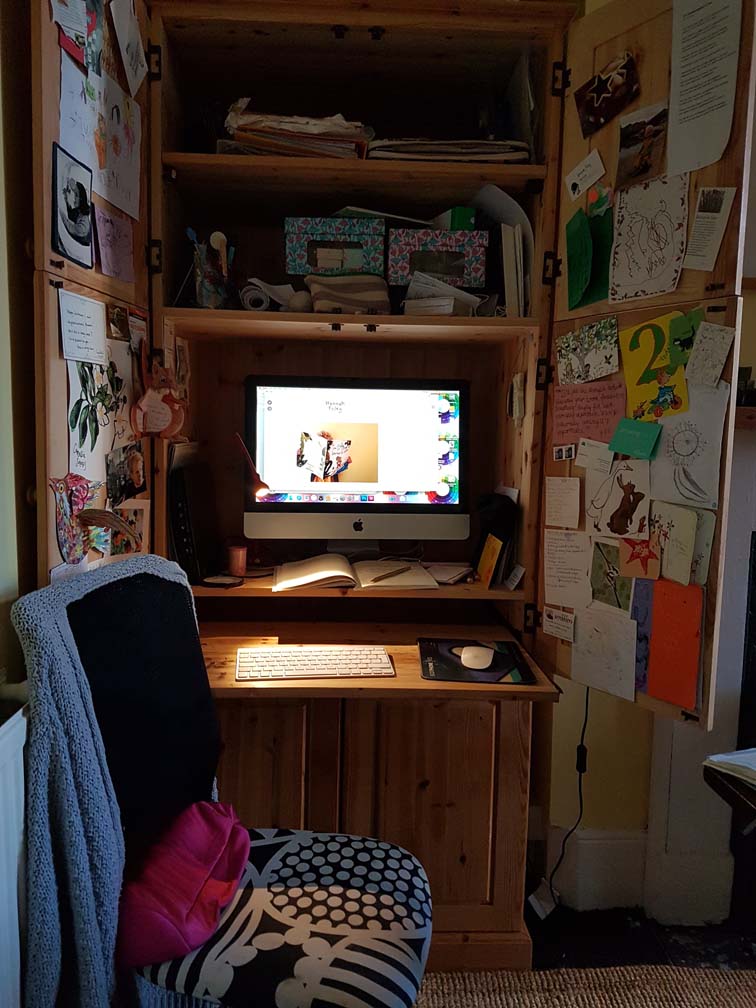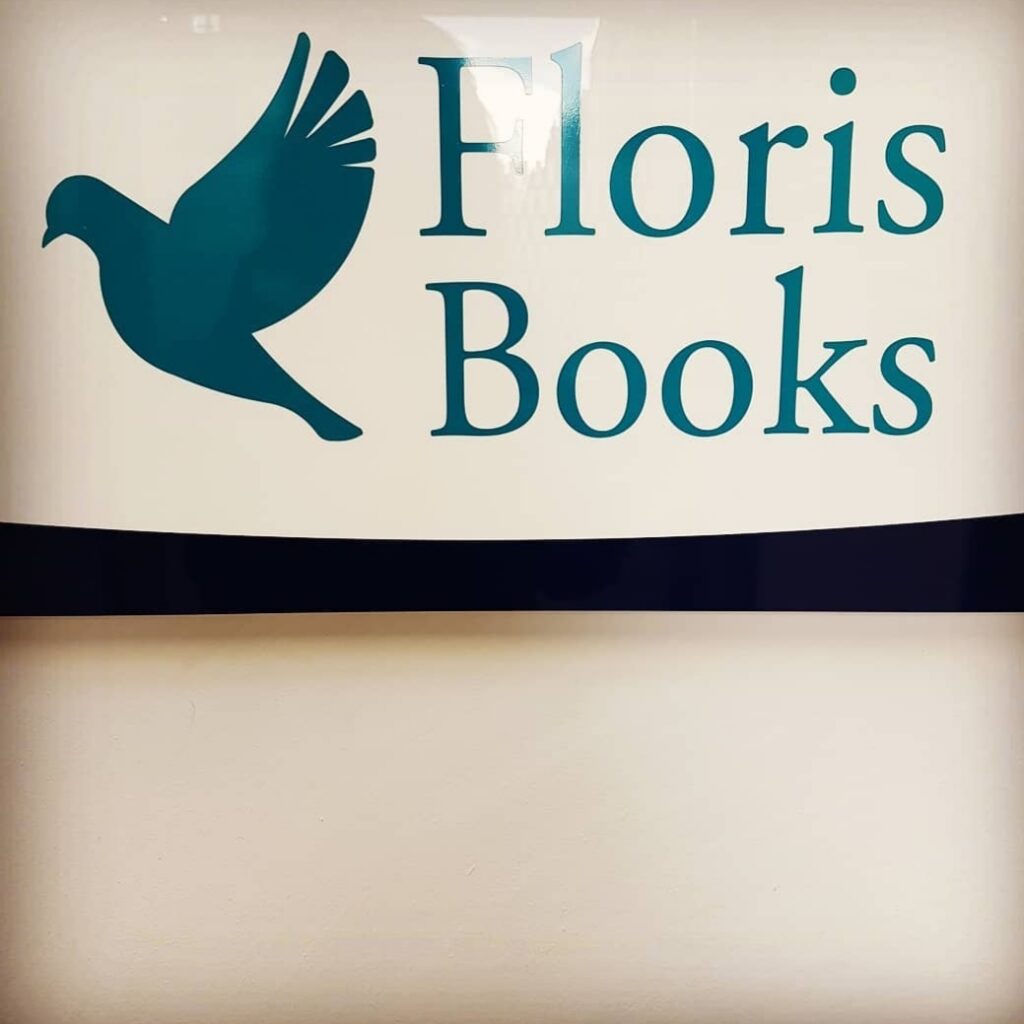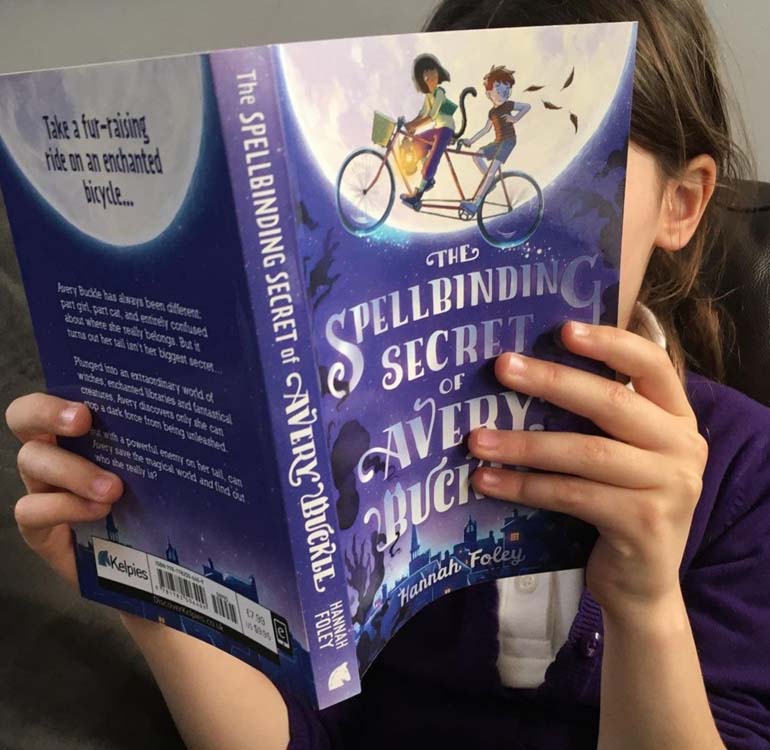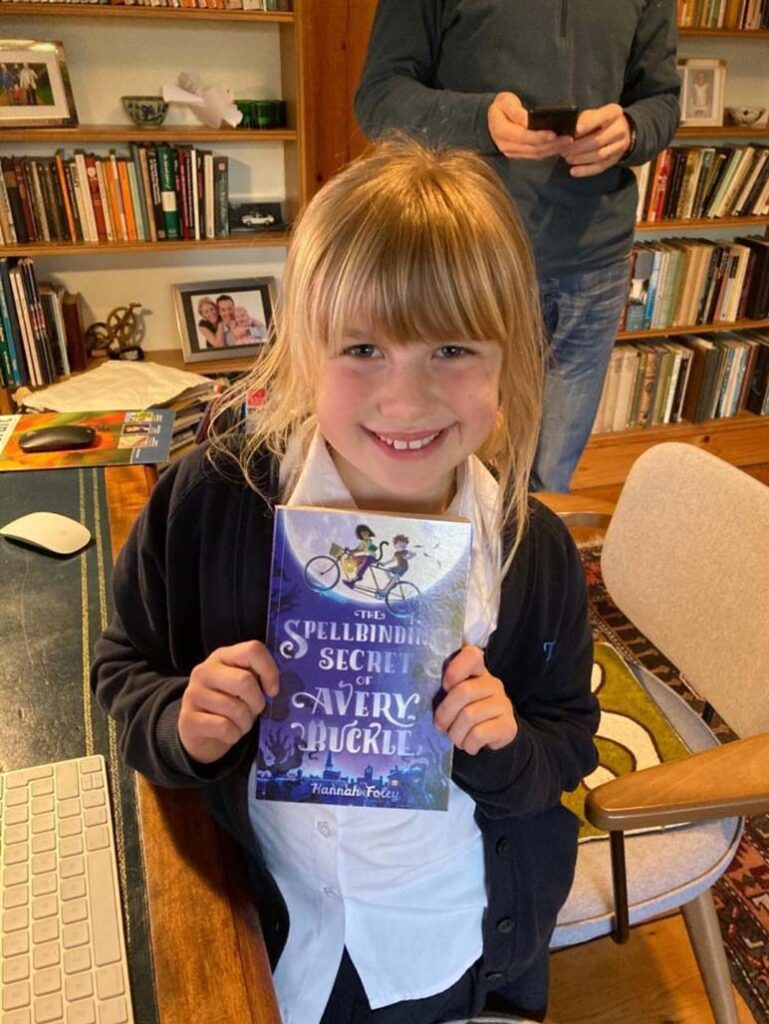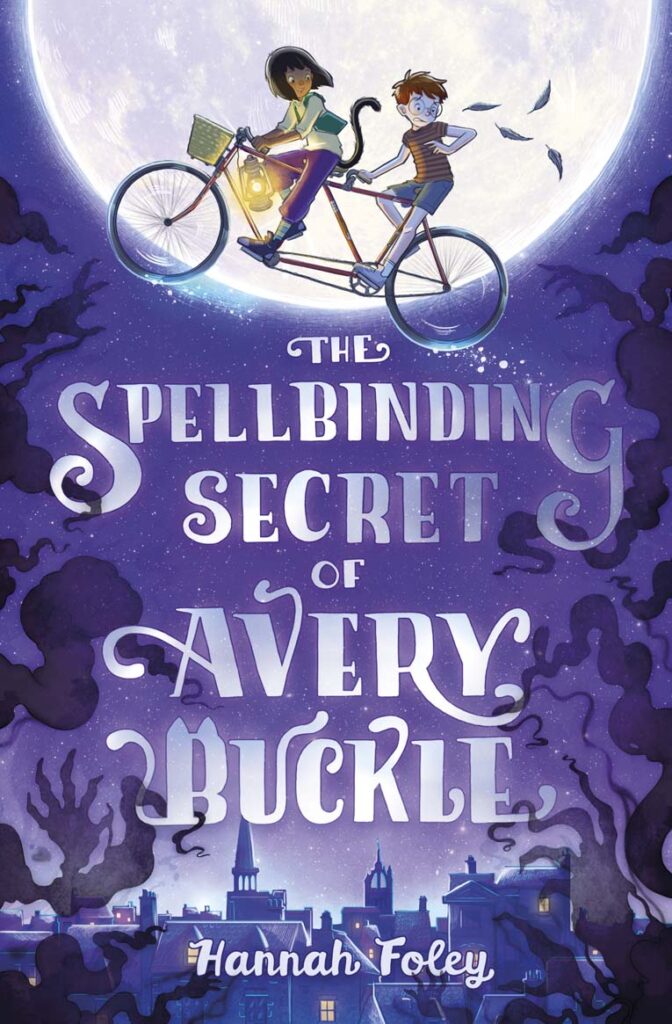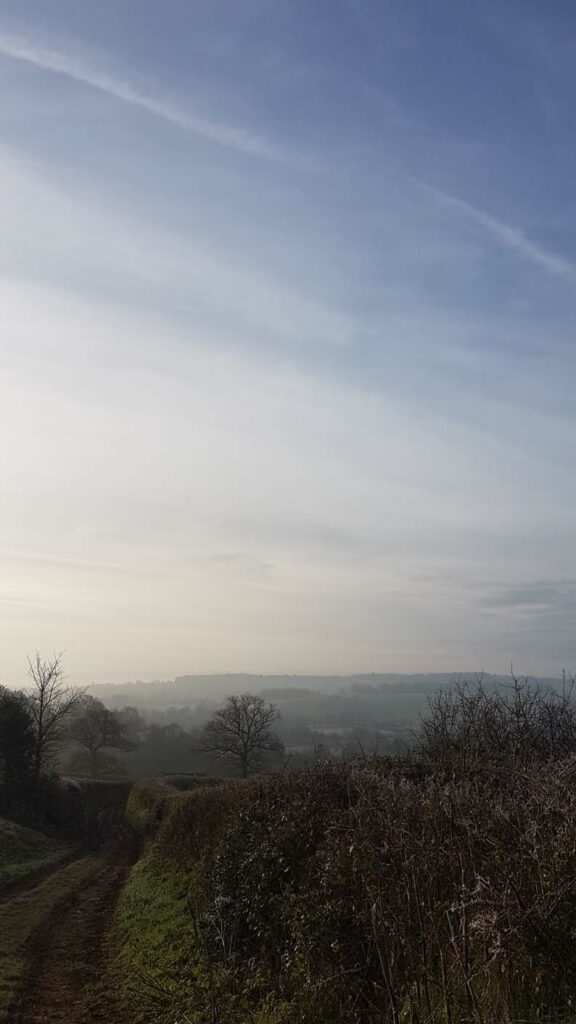
I’ve written in my previous post about the Cat Fae element of Avery’s character in my book, The Spellbinding Secret of Avery Buckle. For those of you who don’t know, one of Avery’s secrets is that she is a Cat Fae. For a quick re-cap: a Cat Fae is a creature I made up – someone who is part cat and part human. Avery has a tail, and many of the special characteristics of a cat, such as being able to see in the dark, and being very agile. This idea was partly inspired by the Scottish folktales of the Cat Sith: supernatural, black, big-as-a-dog, cats from the Scottish Highlands.
The word Sith conjures up Star Wars images but it is actually the anglicised version of the gaelic word Sidhe. Sidhe forms part of the word Aos Sidhe which means faeries or the fae-folk. Not long after Avery arrives at the witches’ house in the book, she meets her first faery. His name is Ghilli Dhu (inspired by another Scottish folk character if you fancy looking him up!), and later travels to the faery capital at Inchmahome.
Sidhe means “mound of earth”, so the gaelic word for faery, Aos Sidhe, translates as “People Of The Mounds”. When I was writing Avery Buckle I was absolutely fascinated by this literal meaning, and the origin of the phrase. Did it mean hills, or mountains? Was there an historic idea of faeries coming from particular topographic features like that? It turns out there are plenty of mounds or hillocks, right across the UK, with faery associations – take the Pixie’s Mound at Stogurcey in Somerset for example. The interesting thing about these hills with faery, elfin or pixie associations is that they tend not to be naturally occurring hills, but rather ancient burial sites or barrows.
The late, great children’s author, Alan Garner writes captivatingly about his experience of uncovering a Bronze Age burial site associated with faeries, almost by accident, after following the detective trail of an oral story passed down through his family. His ancestors had lived at Alderley Edge in Cheshire for generations. The story he grew up with ran along the lines of the old Sleeping Hero myth, i.e. a king asleep under the hill who will rise up on a day of great danger and save everyone. There are versions of this story across the UK, and Europe. Alan’s family’s variation of the story particularly referenced features of the landscape around Alderley Edge, including one feature known historically as “Elfgrenhoks”, meaning “the sandy ridge of the elves”. The story told the journey of a farmer taking his white horse to market, being stopped by an old man keen to buy the horse. The farmer wanted to get the best price for his horse so he refused the old man. The old man replied that should he change his mind, the farmer could find him by following a path through various landmarks around Alderley Edge. The farmer was unable to sell his horse at market so on the way home he followed the route to find the old man, and you can probably guess who the horse was for. The Sleeping Hero!
The thing that piqued Alan’s interest about the story is that the route the old man told the farmer made no sense in modern day terms at all. It seemed to wobble about and come back on itself, all over the hill. So Alan started to investigate the landmarks themselves, and discovered, much to his amazement, that beneath each reference, there were Bronze Age sites. From a Bronze Age perspective the route would have made complete sense.
We so easily dismiss stories as made up things, don’t we? Science is, in contrast, about establishing a sufficient body of the correct sort of evidence collected in the correct way, and until then, understandably, the details of a particular phenomena are discussed cautiously, and in qualified terms. Yet, the family story identified Bronze Age finds that no scientist had ever thought to look for. Alan Garner says:
“Archaeologists appear to have become afraid of speculation in this area, and I am not the one to blame them. On all sides, if they listen, they are threatened by Old Straight Tracks, blind springs, New Age mystics, dragon roads, and space suits. But I am not an archaeologist, so it does not matter if I make a fool of myself.”
I am not an archaeologist either, so, perhaps I too may be permitted to speculate, and make a fool of myself…!
I wonder whether Alan’s family were later migrants creating literal faery/mound stories to try and understand the remains they found, or even descendants of those same Bronze Age peoples passing on a sacred story of commemoration through the generations? The role stories play in helping us understand and make sense of the world can’t be overstated. We all do it, all the time. And so I’m going to speculate some more…
Local to us here in Devon are the remains of several Iron Age hill forts. One of them in particular is thought to have been the site of a decisive battle between the Celtic Devon tribe, the Dumnonii (Roman name), and the incoming Anglo-Saxons. The Anglo-Saxons successfully occupied the fertile valley bottoms, but the Celts remained in the hills, launching marauding attacks on the Anglo-Saxon villages. Nearby Thorverton has a wide, paved, rectangular area in the centre, called the Bury. It was built as a stockade by the Anglo-Saxons, where animals could be penned in by gates at either end, to protect them from the attacking Celts. But as time went on the Celts were pushed further and further into the uplands, and west into Cornwall. Isn’t it interesting that it’s often exactly these sorts of places where stories of magic, faeries, and elves, tend to occur? Think of Dartmoor, the Lake District, and pretty much anywhere in Wales or Scotland.
And now I really am going into speculation overdrive…! I wonder if many of our folklore and faery tales, might originate in the Celts, and Anglo-Saxon ‘othering’ stories about them, as the Celts were pushed to both the physical and social fringes of the UK. ‘Othering’ is a term used to describe the sociological phenomenon of viewing, and treating a person, or group of people, as intrinsically different from, and alien, to yourself. This happened overtly during the Trans-Atlantic slave trade, when people from the continent of Africa, were explicitly described as property that could be owned, no different from a cow or sheep. But it can also happen in more subtle ways that are less apparent but have the same effect of dehumanising people. We can see it in the way that Muslims have been ‘othered’ in the UK in modern times, signalled any time someone says “Those Muslims”. Another example is Donald Trump saying that Mexicans are “drug dealers”, and “criminals”. I’m sure there are drug dealers and criminals in Mexico, just the same as in every other country. However, when Trump implies that all Mexicans are criminals and drug dealers, as if it is part of the Mexican national identity, he is ‘othering’. Othering creates an “us” and “them” divide, and most often happens, when people don’t really know those they are othering. Donald Trump would be much less likely to make such statements if he actually knew any Mexicans.
Othering is also often a technique used by leaders for political ends. We can see how this might have been the case for the leaders of the Anglo-Saxons. If you believe that the people in the land you are invading are fully human with the same values, rights and responsibilities as you, it’s going to be hard to maintain your integrity while you steal their land. In order for the Anglo-Saxons to retain their own humanity as they forced women and children from their homes, they had to be persuaded that those women and children weren’t human in the way that their own wives and offspring were human. Might their leaders have invented stories about the Celts to support their ideas that the Celts were fundamentally different to themselves, just as Donald Trump did about the Mexicans, or the Nazis did about the Jews? Perhaps those stories might have gone along the lines of: “Now mind you don’t ever cross those hills by yourself. They’re strange up there. I knew a young man who took a short cut that way, but the mist came down, and he got lost. He came across a group of them, brewing potions I shouldn’t wonder, and he was never seen again. Only his hollow laughter can still be heard echoing around the rocks. They kidnapped him, I reckon. There’s something different about them up there, just can’t put my finger on it.” And slowly by slowly, those strange people become ‘other’ altogether, elves in fact. The story I’ve just related is a slimmed down version of a Dartmoor legend from Laughter Tor.
I’d love to say I came up with this speculation totally on my own but I heard a similar theory about the idea of faeries in Scotland originating from stories about nomadic hunter-gatherer peoples. I can’t for the life of me find where I read it now so can’t reference it, but the author speculated that post-Ice Age peoples might not have settled down wholesale to farming in Britain all in one go, and there might have been a period of time when some people were settled in farming, and other peoples were still engaged in a more transient life as hunter-gatherers. The hunter-gatherers might have appeared as strange ‘others’, perhaps only ever seen fleetingly and at a distance between the trees as they came and went. Stories of faeries might have started as a way of making sense of their different way of life. Stories may also have been used to justify ill treatment. A man-made slither of land called Arnmach at the Lake of Menteith in Stirlingshire, is said to have been built by faeries held captive by a local Earl. Might this be a folk remembrance of a real event, in which nomadic peoples were captured and forced to labour as prisoners?
Of course it is all speculation, and wonderful fuel for creating more stories! But it also serves as a reminder of the old adage ‘Words have power, wield them with care.’ When we tell our stories, who do we include or exclude? And why? Do we depict groups of people in ways that emphasise their humanity, or in ways that dehumanise them? How do we educate ourselves so that we can recognise when people in power are telling us stories that ‘other’ particular people. When viewed like that, it’s easy to join my voice to Alan Garner’s when he says, “Coincidence, error, fantasy or folklore: this is a reality. And for this I care.” Glad to be a fool in that case.

